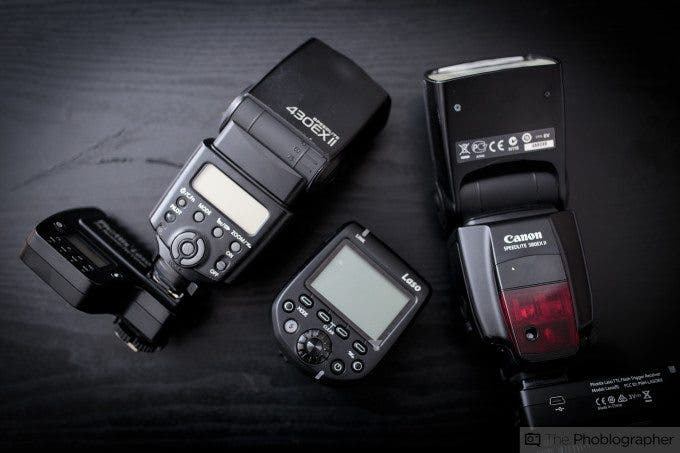It’s Time for Canon and Co. to Stop Making Flashes
Half-hearted attempts at making flashes and other lighting accessories are not winning anyone over.
To get ahead in many photography genres, photographers need to learn how to light using flashes and strobes. Fortunately, you can buy excellent (and affordable) gear from the likes of Godox, Flashpoint, Westcott, Profoto, and others. All of these companies have been innovating in this space, and they have found a way to bring costs down. However, first-party companies have become incredibly stale when it comes to making flashes. They still charge the earth for their lights too. A new announcement from Canon pretty much confirms our thoughts. Let’s talk about this after the break.

A recent article on Canon Watch sheds light on a new flash transmitter from Canon. Wow! Exciting stuff, we know. The Canon ST-E3-RT (version 2) now offers rear curtain sync. It can control up to 15 Speedlites, and it has 8 custom functions. If this sounds a little underwhelming, well, that’s because it is. To top it off, in true first-party fashion, the price of this new transmitter is through the roof! You can pick up this transmitter for $299! Ouch. There are several third-party flashes out there that come with a transmitter for this price.
First Parties Flashes Are Being Out Gunned From Every Direction
The heading for this section may seem a little over the top. However, it’s totally true. First-party flashes from Canon, Nikon, Fujifilm, Olympus, and many others have are not worth the premium prices they command. There has been no innovation from them on this front in donkey’s years. Meanwhile, Godox, Flashpoint, Westcott, and others are breaking new ground when it comes to affordable, feature-packed lighting. For half the cost of a Canon Speedlite, you can buy a couple of wirelessly controlled options. They have all of the same features, that put out the same amount of light, and that just work. Heck, for the price of a Canon El-1 Speedlite, you can buy a couple of wireless, battery-powered strobes. You’d even have money left over to get some modifiers.

Long gone are the days when we would look to the industry leaders for innovation in this space. All of the innovation and forward-thinking is now coming from third-parties. The likes of Canon need to do some serious soul searching to catch-up and figure out a way to offer value for money. Sure, one could argue that even flashes from third-parties haven’t really changed the lighting game. Still, they have tried changing the lighting business model. Most third-party lighting companies aren’t overcharging based on a brand name. They have started implementing smartphone controls. They have even been working hard to innovate when it comes to modifiers that can attach to speedlights. We’re not saying that third-party flashes are perfect. They’re not. However, at least they aren’t committing daylight robbery, and they’re trying to move flashes forward.
It’s Time to Focus on Other Things

Look, we understand that some photographers absolutely feel the need to use first-party branded lights. Still, there are options out there that are better and cost less. Unless the likes of Canon and Co. really start pumping resources into their flashes, they need to give it up. If you want to charge the amount of money you do, figure out how to implement Bluetooth controls. Maybe find a way to implement LIDAR and AI. This way, flashes can get hyper-accurate readings needed to provide perfect exposures based on angles, distances, and depths. Let’s face it; TTL has its issues. If first parties aren’t going to commit to pushing flash technology forward, step aside and let others focus on it. What flashes do you use? Let us know in the comment section below.